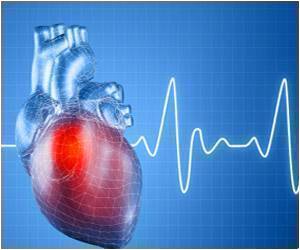A study conducted by researchers on controversial cardiac surgery drug Aprotinin, has discovered that it increases death rates and damages kidney function.
A study conducted by researchers at the Duke University Medical Centre, on controversial cardiac surgery drug Aprotinin, has discovered that it increases death rates and damages kidney function.
Aprotinin, which is used to limit bleeding, had been temporarily stopped from being sold in the U.S. in November 2007, after a Canadian study found similar defects. The drug Trasylol is manufactured by Baylor AG."We're not surprised by the results,” says Dr. Andrew Shaw, an associate professor in Duke Medicine’s department of anesthesiology and the lead author of the paper.
“It's what we expected to find,” he added.
The Duke study is significant because it is very huge and has data collected between 1996 and 2005.
“The study is more than twice the size of the next largest study of aprotinin,” Shaw said.
“Unlike the highly selected nature of randomized trial populations, our data represent the every day cardiac bypass surgery patient population. The data were collected at a time when aprotinin was thought to be safe,” he stated.
Advertisement
“We were looking for an association between exposure to the drug and subsequent adverse outcomes,” Shaw said.
Advertisement
Shaw and his fellow researchers from Duke also linked Aprotinin to the impaired kidney function.
“Kidney function is measured by serum creatinine levels which indicate how well the blood is filtering waste products,” he said.
The study found aprotinin use increased serum creatinine levels, but there was no report of an increase in patients needing dialysis, according to Shaw.
“The reason for it was because we probably didn’t have enough patients who needed dialysis in our study to detect a significant statistical difference, although the incidence was numerically higher,” he stated.
The study was conducted on 10,275 patients, and it was found that 1343 patients (13.2pct) received aprotinin, 6776 patients (66.8pct received aminocaproic acid (another drug used to limit bleeding) and 2029 patients (20.0pct) received no therapy.
All patients underwent coronary-artery bypass surgery (CABG), and 1181 of them also underwent valve surgery. Patients who received either aminocaproic acid or no therapy did not have high rates of death or poor kidney function seen in the aprotinin group.
Aprotinin had been used routinely during cardiac surgery, after gaining FDA approval in 1993, particularly on high-risk patients, to reduce bleeding and the need for blood transfusion.
According to previously published research, patients undergoing cardiac surgery receive approximately one fifth of all the red cell transfusions in the U.S., and each unit transfused is known to increase the risk of infection.
The possibility that the increased death rate was due to high-risk, sicker patients receiving the drug, is a fact, which has not been ruled out by the study, Shaw said.
“You would expect sicker patients would be more likely to die,” he said.
“The unanswered question is, ‘are there differences between the patient groups that we were unable to detect that led to the increased death rate, or is the death rate due to exposure to the drug?’ he questioned.
“Our study doesn’t answer that question nor was it designed to,” he said.
“But it does further raise the question of the safety of aprotinin. And, on a broader scale, it highlights the importance of post-marketing observational studies of drugs that are widely used,” he concluded.
The study appears in the February 21 edition of the New England Journal of Medicine.
Source-ANI
SRM/L











